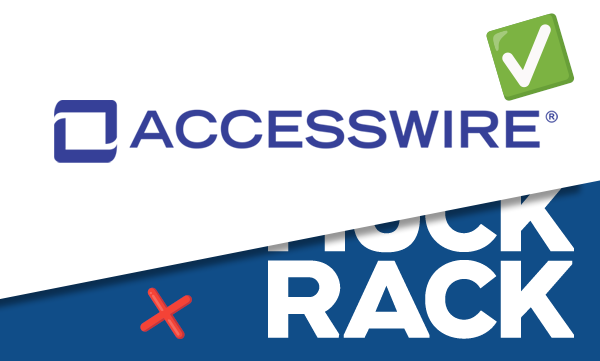A Guide to Corporate Social Responsibility, and Why Your Company Needs a CSR Strategy
To begin to understand what Corporate Social Responsibility (CSR) is and why so many companies are adopting their own corporate responsibility strategies, the “About Us” page on the TOMS Shoes website is a great place to start:
“In 2006, TOMS founder Blake Mycoskie pioneered the One for One® model — giving away one pair of shoes for every pair sold, supporting larger health, education, and community development programs through strategic partnerships.
“Today we give ⅓ of profits for grassroots good. Since the beginning of TOMS, our community has made a positive impact on over 100,000,000 lives — and we’re far from finished...”
Sounds like a pretty cool company, right?
TOMS certainly isn’t alone. Around the globe, companies are adopting similar CSR initiatives – and they are telling similar stories about their own programs.
As well they should.
So, what is corporate social responsibility, and why is it so important? There are countless ways for companies to measure their own success: Some businesses rely solely on how much profit is generated, while others point to employee growth or location expansion in addition to profits.
And then, there are companies that take the extra step to add value to their business by adding Corporate Social Responsibility programs. CSR is a business concept that leads companies to achieve a balance of economic, environmental, and social imperatives, while also addressing the expectations of shareholders, stockholders, customers, and the public-at-large.
Like Diversity, Equity and Inclusion (DEI) and Environmental, Social, and Governance (ESG) programs mentioned in previous blog posts, Corporate Social Responsibility lets the world know that your business does not operate in a bubble, but rather in a purposeful, meaningful way that portends trustworthiness, credibility, and community to your company. An effective CSR initiative touches upon topics such as various social issues, environmental impact, sustainable development, and overall social impact in order to increase employee engagement, stakeholder engagement, customer value, and employee morale.
Put in layman’s terms, building a Corporate Social Responsibility strategy is your company’s way of saying “we care” to your stakeholders, your employees, and to other corporations – and in the global business word, those two words carry considerable heft, in terms of being beneficial to an organization; for example:
- Studies have shown that employee engagement and satisfaction rates significantly rise when a business enacts a CSR program, as do talent retention rates – and more qualified candidates lean toward companies who have CSR practices already in place;
- Companies that have CSR initiatives in place are more likely to enjoy a stronger brand awareness than businesses that don’t have a CSR strategy;
- CSR-practicing business earns more respect from investors, stakeholders, and shareholders, as well as increased customer loyalty.
All the benefits listed here are just a drop in the bucket of the many ways CSR programs can benefit organizations that enact measures to “do good.”
Perhaps the biggest benefit of all is the positive impact CSR can have on a company’s bottom line.
Examples of Corporate Social Responsibility
There are plenty of measures that can help businesses increase competitiveness and success. Some of the most common examples of CSR and good corporate citizenship include (but are not restricted to):
- Environmentally and socially conscious management and investments
- Participation in Fairtrade (trade between companies in developed countries and producers in developing countries in which fair prices are paid to the producers)
- Policies that are concentrated on environmental benefits and eco-efficiency
- Reduction of carbon footprints
- Diversity, Equity, and Inclusion in the workplace
- Charitable global giving
- Community volunteerism
- Improved labor policies
- Stronger business ethics and anti-corruption measures
- Sustainability practices and disclosures
- Expanded social responsibility
Why is CSR Important?
Arguably, the most competitive advantages CSR can bring to companies who choose to implement such a program can include positive changes for the overall health of a business. Some of these advantages include (but are not limited to):
- Access to new markets
- Operational cost savings
- Enhanced sales/profits
- Increased access to capital
- Improved customer loyalty
- Improved productivity and quality
Things to Consider
There are far more benefits of starting a CSR program, particularly if your company is a medium- to- large public or privately held organization; small businesses can improve their own standing in the location or region they serve by building CSR initiatives. As you begin to implement your company’s own program, there are some things to keep in mind:
- Value and Profitability. An effectively managed Corporate Social Responsibility program improves the value of a company, which in turn, increases profitability. Additionally, CSR increases transparency with investment analysts and the media, shareholders/stakeholders, and local communities; corporate accountability is an unintended but important consequence of starting a CSR program.
- Improved Customer Relations. The University of Pennsylvania’s Wharton School of Business cited a recent survey in which most consumers – 77 percent of them — think that companies should be socially responsible. A study conducted by Tilburg University in the Netherlands reported that a majority of consumers said they would pay a 10 percent price increase for products and services from socially responsible companies.
- Starting a CSR Costs Money. Large and midsize companies don’t typically have to worry about budget allocations on the front-end for a CSR rollout, but small business owners tend to struggle to find enough money – particularly those companies with 200 employees or less. It takes time to monitor the success of a CSR program, so be patient. Another option is to make your rollout gradual over a period of time – say, three to five years.
- CSR and Profit Motives at Odds. For larger companies, especially publicly traded organizations, CEOs have a fiduciary duty to their shareholders, stockholders, and investors – all of which expect maximized profits. Corporate Social Responsibility initiatives oppose maximized profits in the beginning of a program’s rollout. Management of a CSR policy is critical to the success of the effort.
Communication Is Key to Supporting Initiatives
When you start a CSR program, you need to share your news with the public, your shareholders and stakeholders, investors, and employees. Keeping your employees aware – especially your sales and marketing/public relations departments – will help them when they talk about the company they work for out in the world. Think of your employees as billboards…what they say about their employer will create great word-of-mouth, free advertising for your business.
For the rest of your audiences, press release distribution will be essential. Fortunately, ACCESSWIRE is known as the industry standard, when it comes to cost per press release; we also offer packages designed to save your company money. For more information, request a demo of our press release distribution service.
Similar Blog Posts



PRODUCTS
ACCESSWIRE | All Rights Reserved

